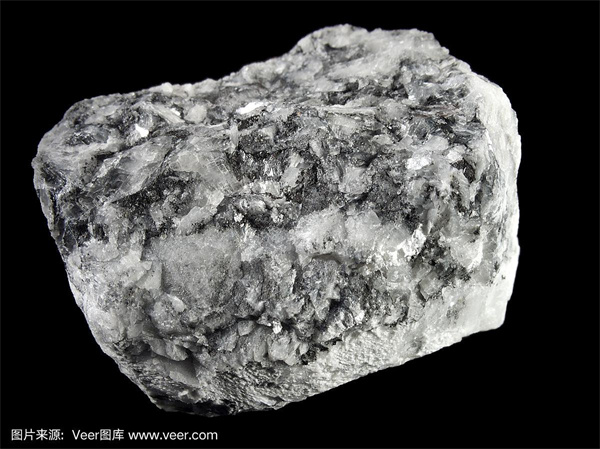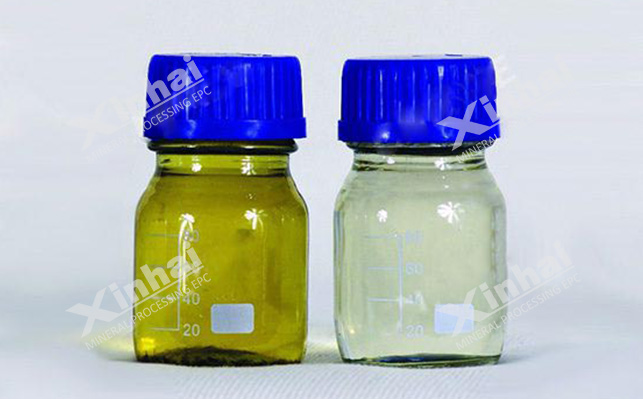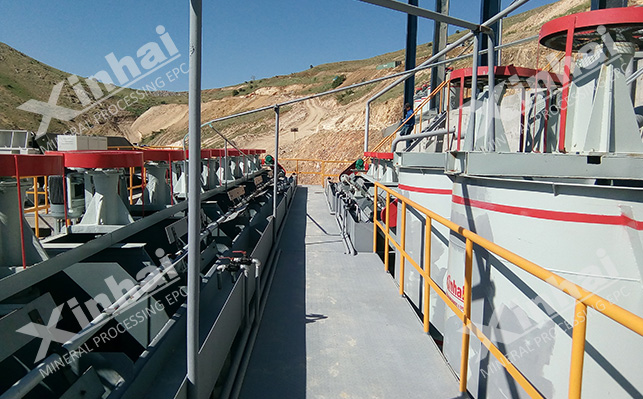Magnesite is often closely associated with vein minerals such as dolomite, calcite, chlorite, talc, and quartz. In the process of separating magnesite from gangue minerals, flotation technology is often used. Reasonable process flow design and appropriate types of flotation reagents play a decisive role in the flotation effect. This article will provide you with a detailed introduction to the magnesite flotation process flow and the selection method of flotation reagents.

The flotation process of magnesite varies depending on the properties of the ore and the purpose of flotation, and generally includes the following steps:
Firstly, magnesite and its gangue minerals need to be ground to increase their surface area and improve flotation efficiency. During the grinding process, the crystal structure, surface properties, and chemical characteristics of magnesite will change, which can reduce the difficulty of separating magnesite from gangue minerals and improve flotation efficiency.
There are many types of grinding equipment, including ball mills, rod mills, vertical roller mills, etc. Different mineral characteristics correspond to different grinding equipment. It is recommended to use vertical roller mills to grind magnesite because the intermediate particle content of the grinding product is high, the iron ion concentration is low, and the specific surface area and roughness are higher than those of ball mills. The flotation index is better than that of ball mills.
Adjusting the slurry before flotation to create a suitable flotation environment is called slurry adjustment. During the process of slurry adjustment, attention should be paid to adjusting the concentration and pH value of the slurry.
The pH value of the slurry can affect the distribution of chemical components, mineral surface electrical properties, and reactivity of active sites. For example, for the reverse flotation separation of magnesite and quartz, the commonly used cationic collector dodecylamine (DDA) has different adsorption effects at different pH values.
For the flotation separation of calcium magnesium carbonate minerals, commonly used fatty acid collectors are more effective under alkaline conditions, so it may be necessary to adjust the pH value of the slurry to the alkaline range.

Collection agent addition
The flotation collectors for magnesite ore are divided into cationic collectors and anionic collectors.
Cationic collectors are mainly used for the reverse flotation separation of magnesite and quartz, such as dodecylamine (DDA) and its modified products (such as BHDA, NCDA, DIPA, etc.). These collectors adsorb onto the surface of quartz through electrostatic and hydrogen bonding interactions, and their ability to collect quartz is stronger than that of magnesite and dolomite.
Anionic collectors are mainly used for the positive flotation separation of calcium and magnesium carbonate minerals, such as fatty acid collectors (such as sodium oleate) and alkyl phosphate collectors (such as dodecyl phosphate and hexadecyl phosphate). Fatty acid collectors have similar collection performance for magnesite and calcium magnesium carbonate gangue minerals, but have poor selectivity. They are often improved by modifying drug molecules or using combination drugs to enhance their performance.
Inhibitor addition
For vein minerals such as talc and chlorite, inhibitors need to be added to suppress their flotation. Inhibitors of talc and chlorite include water glass, sodium silicate, sodium hexametaphosphate, sodium fluorosilicate, CMC, and starch.
For calcium magnesium carbonate vein minerals such as dolomite and calcite, inorganic phosphates are often used as inhibitors, and their sorting performance increases with chain length. The order of selectivity of different phosphates for magnesite and dolomite is sodium hexametaphosphate>sodium tetraphosphate>sodium tripolyphosphate>sodium pyrophosphate. In addition, based on the stability differences of Ca and Mg active sites on the surface of calcium magnesium carbonate minerals and the formation of complexes with chelating agents, the separation performance of various chelating agents (such as EGTA, BATPA, EDDHA, etc.) on magnesite and dolomite was studied.
Addition of foaming agent
The role of foaming agent is to produce stable foam, so that the target mineral can attach to the foam and float. Common foaming agents include MIBC, etc.

After dosing, the slurry enters the flotation machine for flotation. In the flotation machine, the pulp is stirred and aerated to form a foam layer, and the target minerals (such as magnesite) attach to the foam and float up to become concentrate; Vein minerals remain in the slurry and are discharged as tailings.
During the flotation process, factors such as mineral surface properties, adsorption and migration patterns of reagents, and mineral interactions can affect the flotation effect. For example, the hydrophilicity/hydrophobicity of mineral surfaces is influenced by factors such as surface roughness and particle morphology; Mineral interactions, such as mineral cover, mineral dissolution components consuming collectors, and mineral surface transformation, can affect the sorting efficiency.
The purpose of selection and scanning is to further improve the grade and recovery rate of concentrate. Selection is the process of re flotation of the concentrate obtained from rough selection to remove residual gangue minerals and improve the grade of the concentrate. Sweeping is the process of re flotation of coarse tailings to recover residual target minerals and improve recovery rates. Selection and scanning are not necessary steps, and it is necessary to determine whether to add selection and scanning according to the needs of mineral processing.
Above, we have gained a detailed understanding of the entire process flow of magnesite flotation, and introduced the applicable types of flotation reagents in the dosing stage. In determining the beneficiation process flow and dosage of reagents, Xinhai suggests that you take some representative ore samples for beneficiation experiments, and based on the test results, determine whether it can better improve the concentrate grade and beneficiation recovery rate.